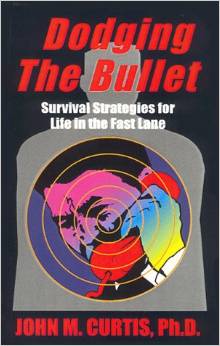Flashing red lights on the economy, the U.S. housing market fell for the fourth consecutive month, suggesting that the second quarter GDP growth of 4.1% could start to decline. Busy raising interest rates, Federal Reserve Board Chairman Jerome Powell will no doubt look carefully before jumping into more expected rate hikes. Rising mortgage rates don’t bode will for new and existing home sales. Existing home sales dropped dropped 0.6% for the third straight month, a 2.3% drop from June 2017. New home sales didn’t fair much better, falling 5.3% to an adjusted rate of 631,000. When you consider existing home sales fell 0.6% to 5.38 million, new home sales account for only 10% of the market. But regardless of the numbers, the decline in new and existing home sales spells trouble for the economy, especially if the Fed continues to hike short-term interest rates.
When homeowners make use of home equity, it has a stimulating effect on the economy, boosting consumer spending. On the other hand, when real estate equity slips, homeowners have less cash to spend into the economy, shrinking GDP growth. President Donald Trump touted the .4.1% Q2 GDP but knows that former President Barack Obama hit 4% GDP in Q3 2014, only to watch it shrink to 1%, two quarters later. With Powell hiking rates, he could inadvertently drive the economy into recession, given the already shaky real estate market. “The housing market has been losing momentum for several months,” said St. Louis-based Stifel’s leading economist Lindsey Piegza. Piegza expressed concern that a deteriorating housing market could affect U.S. GDP growth. “Housing is a sold gauge of the overall health of the economy . . .” said Piegza concerned about recession.
Wage growth has been stagnant over since the 2008 Great Recession, where financial markets melted down because mortgage-backed securities collapsed, causing otherwise profitable investment banks like Soloman Bros. and Bear-Stearns to go broke. “Weakness in housing raises a large red flag regarding the sustainability of domestic growth heading into the second half of the year,” said Piegza, putting the Fed on notice that any further rate hikes should be postponed, pending improvements in the housing market. “Existing home sales help drive other sectors of the economy including consumer spending, as well as construction and lending activity,” said Piegza. Low real estate inventories have “choked” the market, said Jonathan Miller of New York City-based Miller Samuel Inc., especially in hot markets like Los Angeles, New York City and San Francisco.
While foreign cash continues to flood the market in high-end areas, the vast majority of existing home sales requires conventional mortgage financing, accounting for the bulk of the 5.38 million homes sold in 2017. Since the former Fed Chairwoman Janet Yellen hiked rates Dec. 16, 2018, the Fed has hiked rates seven times, leaving today’s Federal Funds Rate at 2.0%. Mortgage rates, based on the 10-year treasury, have put the 30-year conventional fixed rate at 4.54%. “Affordability pressures are increasing concern in many markets, as the combination of continuous price gains and high mortgage rates appear to be giving more prospective buyers a pause,” said Freddie Mac Chief Economy Sam Khater. With the median priced existing home up to $276,000, or 5.2% from 2017, the combination of higher interest rates and lower affordability is taking its toll on real estate sales.
When slowed housing is paired with a frothy, over-priced stock market, it doesn’t bode well for continued growth in 2018. While prediction market sell-offs are never easy, Yale economics professor Robert Schiller, creator of the CoreLogic Case-Shiller Housing Index, saw a 6.4% gain year-over-year, slightly down from 6.5%. Schiller sees signs that Wall Street has shifted into a secular bear market, promising more sideways movement, a sign that GDP growth could be declining. “Home prices are the caboose of the train,” said Miller, warning that they could go down soon. If the stock and housing markets fall, consumers won’t have the cash needed to expand GDP growth in the Third Quarter. While it’s great that Q2 hit 4.1%, things could head south quickly, especially if Wall Street starts to decline. Jobs growth could also start to reverse itself if real estate and stocks start to decline.
Housing markets give a better barometer of economic health than Wall Street whose periodic profit-taking continuously affects markets. There’s no equivalent in the Housing markets of cyclical sell-off, unless homeowner find themselves overly leveraged and have to sell-off. When that happens, like in 2008-2010, mortgage defaults and foreclosures start to rise. “You’ll see prices soften this year,” said Miller, referring to exiting home prices. National Assn. of Realtors Chief Economist Lawrence Yun sees inventories rising with slowing home sales, largely do to inflated prices and rising mortgage rates. While still low by historic standards, rising mortgage rates reflect uncertainty in U.S. economic growth. Any major sell-off on Wall Street would actually drive down the 10-year Treasury rate, helping the slowing housing market by making borrowing more affordable.



